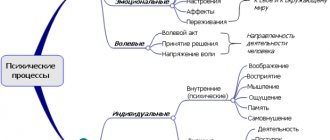Over the past 20 years, interest in genetic research has been growing rapidly. Genes for education, success, intelligence, aggressiveness, and hyperactivity have already been discovered. But it is impossible to reshape the genetic code at will. Moreover, superior genes may not be expressed if the child does not receive proper upbringing and education. The science of psychogenetics explores the relationship between the DNA code and the environment, and also approaches the answers to questions of genetic risks, tolerance to addictions, and personal talents.
We talk about the history, research methods and practical application of the science of psychogenetics.
What is psychogenetics?
Psychogenetics is a borderline field of knowledge at the intersection of psychology and genetics, studying the influence of genetic factors on behavior and their relationship with the environment. People's DNA is 99% the same and 1% different. It might seem like a small number, but there are millions of variations that are of great importance. Psychogenetics examines this 1% of variation and seeks answers to questions about individual differences between people. For example, it does not consider the problem of obesity for the human species as a whole, but studies how much weight gain was influenced by genes, and how much by parents who fed the child unhealthy foods.
In psychogenetics there is no such thing as only congenital or only acquired. It's about interaction. Each individual quality is a product of inherited genes that were expressed or not expressed in a particular environment. In other words, many genes without a suitable environment may not manifest themselves at all, and potential geniuses will be able to manifest themselves only with a suitable environment, upbringing and experience.
Before the development of molecular genetics psychologists assumed that individual differences between people were created solely by their environment during the first years of life. DNA research has shown that genes explain almost half of the differences between people. But a clear relationship between gene and behavior cannot be established. Between them there are intermediate levels (biochemical, physiological, psychological), each of which corrects a person’s abilities.
Take a mental test
Psychogenetics suggests that in addition to hereditary diseases and cognitive abilities, a person receives from his ancestors information about turning points in life (marriage, birth of children), his psychological characteristics, behavioral patterns, learning difficulties, and tendencies to disorders. This manifests itself as loyalty to the fate of the family, forcing a person to repeat the laid down program of his predecessors.
In addition to the influence of heredity on behavior, psychogenetics studies:
- Phenomena of uniqueness, the uniqueness of the psychological appearance of each person.
- The connection of specific genes with specific characteristics and abilities.
- The ability to predict genetic strength and genetic weakness at the individual level.
- The influence of hereditary and social factors on age-related changes, the formation of deviant and addictive behavior.
In the English-language literature, another term is used for this discipline - “behavioral genetics”, but in Russian terminology such a translation is considered unequal. It's all about the history of psychology research. In their works, Russian scientists compared “behavior” with “activity” or “motor activity,” the unit of which is considered action. Behavioral genetics studies the inheritance of behavior patterns and borders on animal psychology. The science of psychogenetics does not measure actions, but studies the variability of specific individual psychological traits of a person.
History of origin.
Interest in the relationship between talent and behavioral characteristics in extreme life situations arose long before the birth of the science of psychogenetics. Back in Ancient Babylon, Egypt, China, and Vietnam, there were tests for people applying for different positions. These tests included not only physical, but emotional and behavioral tests under certain conditions.
An intuitive understanding of the psychological “difference” of people gave birth to new sciences. Since ancient times, physiognomy has existed, which taught to recognize the individual characteristics of a person by his physical characteristics. In the middle of the 17th century, graphology was born - a field of knowledge about ways to recognize the internal qualities of a person from his writing.
The scientific study of individuality began with the work of the English scientist F. Galton “The Heredity of Talent” (1869). The basis for psychogenetics was the evolutionary theory of Charles Darwin. In the 30s of the 20th century, through the joint efforts of geneticists, mathematicians, and psychologists, a basic methodology was formed. In the 60s, psychogenetics finally separated from psychological science and formed into a separate scientific discipline. Recognized authorities in this field are the British professor of genetics R. Plomin, the American geneticist S. Wright, and the founder of Soviet medical genetics S. G. Levit.
Setting goals
What challenges do scientists face? What does psychogenetics conceal? The main and main task of psychogenetics is to track and identify causes, both genetic and those that arose due to the influence of the surrounding world, as a result of which differences in people are formed.
Modern psychogenetic research focuses more on the dependence of the results of children's intelligence testing on the quality of the level of the environment where the child lives and the quality of education he receives. Which factor still has a greater influence on the development of a child? Psychogenetics studies how books, computer games, and music influence the formation of temperament and the level of intellectual development.
We recommend: Choosing a life path
Thus, the subject of psychogenetics research is nothing more than a person’s character, which is formed through the influence of the external environment and heredity. This is the main subject of psychogenetics.
Individual differences are also the subject of psychogenetics. Scientists are especially interested in the differences between people in a single family; they compare not different races, but rather people in whose veins the same blood flows.
Briefly about psychogenetics
Psychogenetics is a very precise science that is at the intersection of genetics, physics, philology, medicine and psychology, confirmed by hundreds of thousands of practical studies and examples in many countries around the world.
According to Timofeev-Ressovsky, “everything can be inherited...”. Therefore, by studying the history of the family, i.e., by drawing up a family tree, it is possible to calculate and show the client what hereditary predispositions and patterns exist in all spheres of life: health, personal life, relationships with a partner, at work, with money, with power structures etc. Even before a person’s birth, the genetic code determines the inherited biological and physiological characteristics of the body, predisposition to certain diseases, and most interestingly, most of the prospects for his life and the basic models of thinking, character and behavior. Analyzing the history of a person’s clan, one can see patterns repeating from generation to generation - the laws of the clan. That. We calculate the algorithm that a person unconsciously follows and develop a strategy for modifying and transforming an undesirable behavior pattern into an effective one.
For example, a girl’s great-grandfather died during the Civil War, one grandfather died during the Great Patriotic War, another went missing, her father drinks and walks. We fix a constant - the departure of men (to death, to alcohol, to another woman, etc.). It turns out that a girl, due to her family history, is predisposed to losing a man (partner, spouse, friend) on a subconscious (genetic) level. She will marry at least three hundred times, but the men will leave, disappear or disappear until she realizes that the reason for her “failures” is hidden in herself. She needs to understand the hereditary pattern of losing men and modify (transform, transform) into the opposite. Then the client’s problem in the area of family life is solved.
Another example: if there were repressed or dispossessed ancestors in the family, then patterns of loss of acquired property are passed down through generations (defaults, bank collapses, deception, theft, non-payment of debts or wages, failure to fulfill contracts, etc.). The algorithm remains the same, and the scenery changes, but the essence is still the same - property is “taken away”.
In my practice, there were several unique cases when the descendants of the repressed had their businesses fail several times: a woman and her common-law husband had several stores and points of sale on the market. And they remained at a loss. They had been in car accidents more than once, and someone suggested that they contact a pychogenetics specialist. It turned out that the woman’s great-grandfather was a White Guard general, who at one point got tired of fighting with his people, he left the army and returned to his estate to his family. But when the Reds came to the estate, they cut the general with a saber in front of his wife and children. And when creating a family tree, it was revealed that in the next three generations, women gave birth to children from some men, and married others. The law of the clan was harsh: one’s own father could be destroyed with his wife and children. What seems bad to us actually saves us. That. life protected the lives of men, “not allowing them to live with their own children and wives.” The most interesting thing is that this woman attracted a common-law husband, whose children also had stepfathers, not fathers, for several generations. I had to work in two directions: if possible, to live safe and sound with my beloved husband and children, and, because... they took away the general’s estate, wealth, horses, all awards and other property, it is clear why his great-granddaughter’s business did not develop. After a step-by-step program of consciousness retraining, the woman registered with her common-law husband and set up her own business, which began to generate good income.
Men also address the issue of resolving their personal lives. Surprisingly, men get the desired results faster and more effectively.
So, awareness of genetic patterns, undesirable family patterns of behavior (for example, alcoholism repeated from generation to generation, unhappy marriage, lack of money), combined with the development and implementation of a clear plan of practical action to overcome these patterns, allows a person to change his life for the better.
A psychogenetics specialist, first of all, helps people gain self-confidence, overcome unwanted behavior patterns, get rid of the genetic code contained in DNA molecules, and also show ways to solve problems of any complexity. Therefore, our work is akin to the work of a detective: collecting data, comparing them and - deep, scrupulous, delicate analysis.
A person, knowing his genogram, receives the “key” to solving any problems. individual work begins , now requiring the client’s understanding and systematic, consciously guided activity.
Definition of types of studies
It's time to talk about such a topic as psychogenetics methods. Psychogenetics, as a developed branch of genetics and psychology, has developed its own methods with which it identifies differences between people:
1. Twin method. It is very popular in psychogenetics. Its meaning lies in the divergent genotype identity of identical and fraternal twins.
Scientists also conduct research analyzing and comparing people who are hereditarily identical, but grew up in different environments. However, using one type of study does not provide a complete analysis.
We recommend: Giftedness is
2. Genealogical method. Let's get the family tree. Just for fun, you yourself can trace the distinctive features among your family members by comparing the appearance of representatives of different generations using photographs.
However, it is more widely used in medical genetics and anthropology, but in psychogenetics as a separate tool it will provide an incomplete answer. Why? Because the adoption of psychological traits may be due to social continuity, and not just genetics.
3. Population method. The method is based on the study of the continuity of a separate group of genes. A psychogenetics method that can be used to identify any family pathologies.
4. Analysis of the heritability of normal psychological traits. This method is inaccurate, and it is never completely clear whether these signs existed from birth or were imparted over time through the influence of the surrounding world and traditions.
5. Method of adopted children. Comparison of a child with two families. The characteristic we are interested in is taken and correlated with real parents and adopted ones.
After all types of research, the results are carefully processed.
Next, consider the problems of psychogenetics:
- The study of the causes of the emergence of human personality. How do those features that distinguish us from each other arise?
- A precise definition of the structure of human personality. What is it made of and what mechanisms does it consist of?
- Measuring and determining the location of individual characteristics in the character and temperament of a person.
- Identification of certain external factors that influence an individual.
- Patterns of individual personality development, as well as the state of genotype-environmental interactions.









